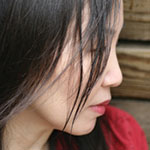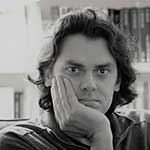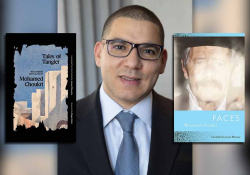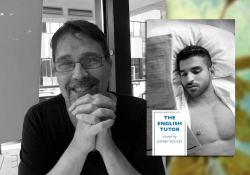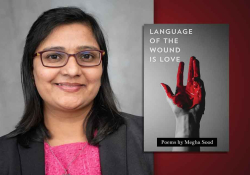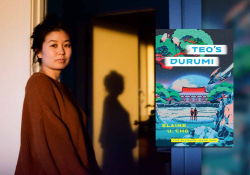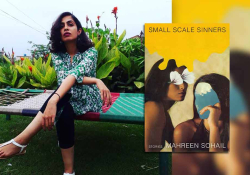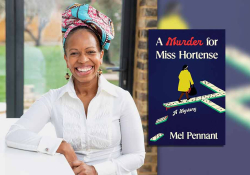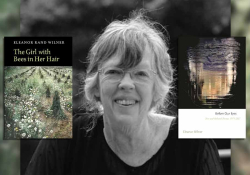“Not Knowing How to Get There Is What Makes You Great”: A Conversation with Chilean Poet Mario Meléndez
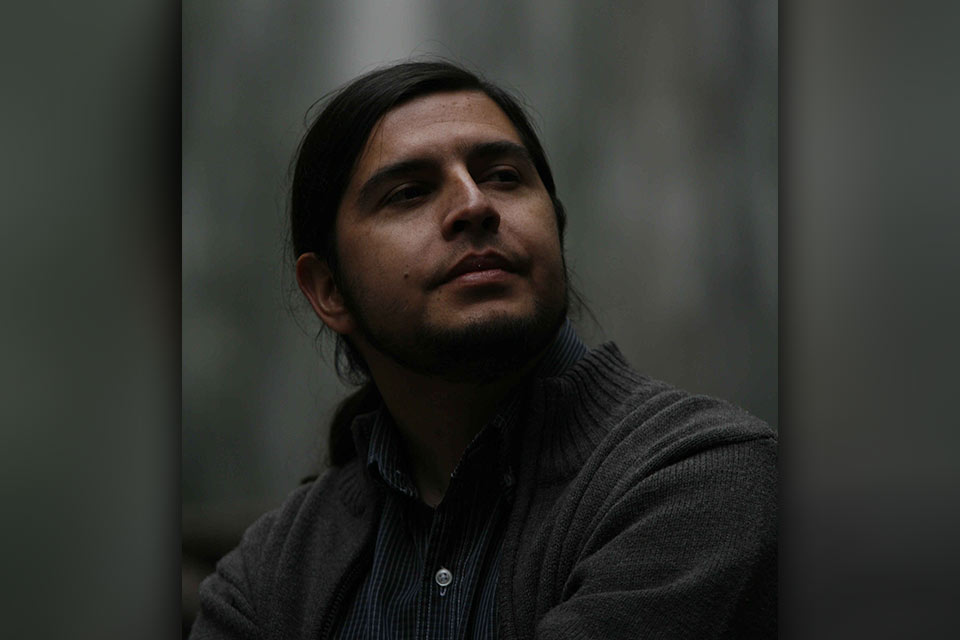
Regarded as one of the most original voices of the new Latin American poetry, Mario Meléndez (b. 1971) is a Chilean poet born in Linares. Among his books are Vuelo subterráneo, El circo de papel, La muerte tiene los días contados, Esperando a Perec, Jardín de escombros, and El mago de la soledad. Selections of poetry have been translated into more than fifteen languages. In 2012 he moved to Italy, and the following year he received the medal of the President of the Italian Republic, awarded by the Don Luigi di Liegro International Foundation. In 2015 he was included in the anthology El canon abierto: Última poesía en español (Visor). In 2017 some of his poems appeared in translation in Poetry magazine. In 2018 he returned to Chile to become the editor in chief of the Vicente Huidobro Foundation. In 2022 RIL editores published his collected works under the title Apuntes para una leyenda (Notes for a legend) and the anthology Réquiem para frutas suicidas (Requiem for suicidal fruit).
Ming Di: There have been many influential poets in Chile. Do contemporary Chilean poets of your generation, especially you yourself, feel a kind of pressure or that you are writing under anxiety of influence? How have you managed to make a breakthrough or to take a different path?
Mario Meléndez: I believe in every work of art, the weight of tradition is undeniable. One inherits all those authors who went before and thus should approach writing with much humility. Like the singer-songwriter and poet Mauricio Redolés used to say: Next to those mountain ranges known as Mistral, Huidobro, Neruda, Parra, etc., we don’t even reach the height of those little sand piles built by lovers on the beach. But to paraphrase the indescribable Gonzalo Rojas, perhaps it is just that not knowing how to get there is what makes you great. . . . Well, and in regard to the actual path, I think it is forged and firmed up through reading, because without reading there is no writing; the more imaginary worlds we know, the greater our possibilities are when we sit down to a creative endeavor . . . so that we might, at last, write (should this ever happen) what the master Antonio Machado called that handful of true words.
Ming Di: Chinese poet Han Dong proposed to “Pass Bei Dao.” In a scenario of literary patricide, who would you like to “pass” or “kill” in order to have your own voice?
Meléndez: I don’t have a literary father, but if I had to name one it would be the undefinable Lewis Carroll, with all the weight of his Nonsense or his lack of meaning that in turn helped bring about a series of fortunate and unheard-of events, namely dadaism and the absurd and their champions Tzara, Ionesco, Beckett, Vian, and others. And in Latin America, Vallejo and Parra, those two poets who stand at the antipodes. When I quote Machado, I do so in a pedagogical sense, as one referring to the creative process—that is, talent or the ability to do something isn’t enough, there must also be work, a perseverance, so that that process of decantation might take place, so that we might arrive at those true words of which Machado spoke.
Talent or the ability to do something isn’t enough, there must also be work, a perseverance, so that the process of decantation might take place.
Ming Di: What I meant, well, it doesn’t have to be a literary father then, could be but not necessarily. In China, out of the “Pass Bei Dao” or “Pass the Misty Poets” emerged a whole generation of post-Misty poets who have dominated the poetry scene for the past thirty years, and now the younger generation is trying to “pass” them. Allow me to rephrase it to extend the question: is there any literary figure in Chile who is so influential that you (and the younger generation) have to get rid of the influence of his writing style in order to develop a new poetics?
Meléndez: Continuing with the topic of literary influence, perhaps that process of natural decantation in Chile is best seen in Nicanor Parra. His poetry, on one hand revolutionary and on the other liberating, opens up endless possibilities for future generations and frees them from the yoke of a Latin American confessionalist poetry and especially from a Nerudian poetics. In the 1950s it was almost impossible for an aesthetic with the intensity of Neruda’s literary project to develop, and then Parra shows up and publishes Poems and Antipoems in 1954, which causes a huge stir not only in Chilean poetry but also in Latin American verse more broadly and in the poetry of other regions.
With the topic of literary influence, perhaps that process of natural decantation in Chile is best seen in Nicanor Parra.
The Beat Generation themselves admit to this, as they were among the first to translate and publish him in the US. In this we witness the desacralization of language. In Parra, the confessional I becomes a collective; that is, the speaker in Parra’s poems can be anyone and is not necessarily the author. Parra takes this from British poetry (during his years in England while studying cosmogony in Oxford, 1949–52). He gets this most of all from the great nineteenth-century poet Robert Browning, who creates an interior monologue for a multiplicity of characters. Thus, Parra’s poetry is an art of imposture, which has a lot to do with theater and its offshoots, which is why after so many years (even though it sounds paradoxical) it is not fully understood in Spanish.
And then there’s another key person, this one from twentieth-century art, none other than Marcel Duchamp and his celebrated idea of the “found object.” In Parra’s work, this corollary or parallelism can be seen in Artefacts from 1972 and then in Practical Works from 2001.
Ming Di: This transnational, reciprocal influence is similar to what happened in the early twentieth century when Ezra Pound was influenced by classical Chinese poetry, and the imagist movement influenced Hu Shi, who started the New Poetry Movement in China in 1917. Well, you have lived in Mexico and Italy and returned to Chile. Has traveling and the experience of living abroad had an impact on your poetry writing, and if so, in what way?
Meléndez: Of course, contact with other cultures and their languages undeniably rearranges the meaning of many things and widens your own radius of action. Furthermore, to have resided in two countries with magnificent cultures, such as Mexico and Italy, leaves an indelible mark on everything you do. Neruda used to say that Mexico could be found in its markets, that flowery and thorny Mexico whose dialogue with death is impossible to reproduce, that funereal allegory which permeates everything and which we witness in every face like a burn. But on the other side, there is that Italy held up by columns of ash, incinerated by its own history, by the tutelary faces and remnants that inhabit the country and that have marked the path of our own style.
Ming Di: It’s interesting that one could speak the same language but experience a different culture in one place and in another place, far away, see your own reflections. Have you noticed any major difference between Chilean poetry/poetics and other literary traditions? How does the discovery of such awareness affect your writing?
Meléndez: Without a doubt, the presence of the landscape and its diversity is decisive in Chilean poetry. From Mistral to Zurita, the stamp of our geography has left a mark in many of these creators. Even a poet as avant-garde as Huidobro writes, in the twilight of his life, a text like “Monument to the Sea,” which caused Gonzalo Rojas himself to say that no one had ever descended so deep into those abysses. Neruda who set off from one canto for Chile and arrived at that other general and seminal Canto, because it was necessary to give an account of other beings and other sacred environments, to widen the register of voices and places of belonging. Or that Zurita who, when he speaks of mountain ranges, oceans, and deserts, speaks of none other than those places where the bodies of the disappeared detainees were thrown during the dictatorship. Chilean geography as a tomb and a tombstone for those No Names. That other defoliated country.
Chilean geography as a tomb and a tombstone for those No Names. That other defoliated country.
On the other hand, among those ominous nostalgias of which the poet Gonzalo Rojas himself spoke, there is the inescapable childhood, that shared territory, that veiled homeland that in the words of Celan would be “like a kind of return home.” There are also other ages, as the soulful Jorge Teillier shows us when he tells of the home, of the places and the beings of our affection, of the LAR, as the Romans called it, or those timeless and dusty people in southern Chile, the far west creole, as Neruda called it. “If at some point my voice no longer can be heard / think that the forest speaks for me / with its language of roots,” it reveals to us, in the manner of an epitaph, that poet who was born in Lautaro. In these coordinates, nature’s song inevitably seeps into the most distant aesthetics, such as anti-poetry or surrealism. Even more, the symbols it represents for our First Peoples, their epic breath, the significance of blue to the Mapuche worldview, the song of the larch and the hazelnut, the rivers that graze in our dreams and above all, in a sense of vindication, as the antipoet Nicanor Parra interpellates us when he cries out: “Let us protect the last remaining black-necked swans, with tooth and nail, with fists raised, come what may. Poetry will thank us.”
Thus it is that poetry should be a witness to its age, it can’t escape the responsibility it inherited. Therefore, everything that happens around it is prime material for the creative process. For that reality which overwhelms us and little by little has turned this planet into a less lovable place and which also seems to show on its tag an inescapable expiration date. To paraphrase Parra’s accurate words, let’s defend the last sacred places, the flora, the fauna, the ocean, the mountain ranges, the environment, and all that was here before us and that I hope will survive us when the last of our species disappears. . . . The pandemic put things in their place; it seems that human beings aren’t of this world, locked away in their houses and their fears; it would take one hundred years of absence (or maybe solitude) for everything to return to its place, so that everything can catch its breath again. . . . We aren’t worthy of the world we live in, the dead of Comala whisper to us in a language that can’t be repeated. Have we ever been worthy?
We aren’t worthy of the world we live in, the dead Comala whisper to us in a language that can’t be repeated. Have we ever been worthy?
Ming Di: You have also traveled extensively in your book-length poem Waiting for Perec, as you have responded to so many literary figures, artists, and musicians. What inspired you to write this long, ambitious poem? Why do you choose Samuel Beckett and Georges Perec to whom you pay homage?
Meléndez: Waiting for Perec is a journey through cultural history and art history. Brief narratives describe events and characters whose validity only exist within the logic of the text, as if they are parallel realities that emit other realities. There is a moment of encounter between microfiction and its direct relations (parables, bestiaries, one-liners, aphorisms, epitaphs, graffiti), maybe in a necessary and vital mixing of genres so as to bear witness to a world that only exists in our imagination, but motivated by the disillusionment of a present whose inertia, whose apathy, whose lack of sensibility is suffocating. Beckett and Perec are those two figureheads of the absurd related to that other major figure, namely Lewis Carroll and his notion of Nonsense. . . . I believe that that is the point of departure, the primordial yeast from which the book is born . . .
Ming Di: Does the landscape of your imagined world in your poems reflect a real place or a real scene? For instance, in #36 of Waiting for Perec, you write:
I saw one hundred butterflies leaving the cemetery
they were the color of wheat
of rain
of ash
they changed according to wind speed
light speed
they hugged dwarf trees
flowering acacia
Are these lines total imagination or memory of a place or what you were seeing? I was wondering how you write between the imagined world and reality.
Meléndez: Those passages you mention, while they might speak to parallel realities, they are based in a concrete reality. They are rooted in prehistory, in those beings and places that populate the imagination in an almost ritual manner. One is the recipient of all those visions that somehow have helped fashion a style. Cioran used to say that there is nothing sadder than those poets who only read other poets. And on the other side of that, its antipodes, there is Huidobro, whose prophetic nature had him seek associations with other disciplines. He arrived with his family in 1916 to a Paris at war, and there he found those crazy geniuses like Picasso, Gris, Braque, Apollinaire, Reverdy, Desnos, Tzara, Man Ray, Arp, etc. “I saw the best minds of my generation . . . ,” Allen Ginsberg reminds us. And it’s those brilliant minds that reinforce and sharpen Huidobro’s own aesthetic, which he already possessed in an embryonic state in The Water Mirror, published as he passed through Buenos Aires. Why have I referenced this passage? Because creation is a sacred fire that is lit in many ways. And just like Huidobro was certain about this from the beginning, thus the coexistence with other aesthetics and disciplines helps expand, even more, that radius of action; they nourish in a vital way that imagination which dialogues with and ungirds every poem.
Creation is a sacred fire that is lit in many ways.
Ming Di: Can you describe what Linares is like? How long did you live there, and how has it shaped your upbringing and made you a poet?
Meléndez: Linares is fundamentally a farming and fruit-growing region, with a touch of timelessness in its roots. I believe that in that embryonic poem “Lords of the South,” the keys to my immediate surroundings can be seen, and even though the text was written thirty years ago, it can absolutely be read as a contemporary poem. I quote: “Lords of the south / I have committed my roots to you / my word will arrive like a river / to gather the earth and its origin / Call me farmer / when the wheat awakens / when the seed is crushed / and winter rises up in one hand / Call me soldier / when the water and the rock gather together / then I will be the dagger / that rips ash and sheath / Don’t give my name to the River Maule / it will know me by my voice / by the whispers my lips / carry to its bed / Don’t say anything in Constitución / or in Pelluhue or in Chanco or in Curanipe / my name was found in a wave / you don’t have to say anything at all.” The gravitational presence of Neruda and de Rokha can be felt in the tone, in the cadence, in the pauses. But that’s how this goes: “We all come from some shipwreck, even if we don’t know it,” the poet Rosamel del Valle affirmed.
Ming Di: It’s interesting to see Neruda and de Rokha at the same time. Who are your MOST favorite poets and writers?
Meléndez: My favorite writers and poets are those who walk beside my creative process. Thus, my taste and influences vary depending on the work in progress. Furthermore, that work is influenced by other external agents such as painting, cinema, or music, for example, or from some other mode of knowledge. I deeply believe in functionality, in the way that things get in sync in some realm of thought in order to reclaim their space and time.
I deeply believe in functionality, in the way that things get in sync in some realm of thought in order to reclaim their space and time.
Ming Di: I actually like what you just said, avoiding specific names. Each piece of work is responding to a certain inspiration and most of the time beyond the field of poetry, as poetry is not isolated. Can you talk about the current poetry scene in Chile? Any interesting poets you would like to recommend to WLT’s readers?
Meléndez: Of those who most readily come to mind, without doubt Diego Maquieira, Armando Roa Vial, Clemente Riedemann, Rosabetty Muñoz, Paulo Huirimilla, Maribel Mora Curriao, Jaime Huenún, Damsi Figueroa, Juan Cameron, Isabel Gómez, and some others whose names escape me for the moment. There are many good poets who live, especially, in the provinces, but who often do not have the possibility of presenting their work beyond the national border because it’s always the same people who take advantage of those spaces. It would seem that Chilean poetry is little more than just four or five names that rotate in a constant and arbitrary manner, and that, to be honest, is an embarrassment. And while it is true that a few of the poets mentioned have been able to escape the “horrendous Chile,” as the skeptical and concise Enrique Lihn called it, the majority of them are worn down and diluted by the country of long shadows. But I also feel that there’s a complicity in this, which can be seen in the lack of recognition given to the other when the other doesn’t belong to a specific group and, on the contrary, those who are nearest get promoted with shameless exaggeration.
Ming Di: In China, there are traditional poets and avant-garde poets, government poets and independent poets, spoken-language poets and academia poets, etc. Are there such kinds of divisions in Chile?
Meléndez: There used to be a more readily recognizable differentiation in terms of content, such as the earthy poets that included Mistral, Neruda, Pablo de Rokha, Efraín Barquero; the small-town poets or the timeless ones like Jorge Teillier, Rolando Cárdenas; the cryptic or hermetic poets, like Rosamel del Valle, Humberto Díaz-Casanueva, Omar Cáceres; and those who practiced surrealism as part of the group La mandrágora, such as Braulio Arenas, Teófilo Cid, and Enrique Gómez-Correa. And, of course, there were those who never ascribed to any literary trend, like Nicanor Parra, Gonzalo Rojas, Enrique Lihn, or Stella Díaz Varín. Nowadays, there is quite a bit of poetry as a mode of identitarian recognition. But, I’d like to insist, what matters is the decantation of the word, and this has little to do with content, style, or trends and everything to do with a poet who encounters the word and the imagination.
Ming Di: Last but not the least, as the editor in chief of the Vicente Huidobro Foundation and Altazor magazine in Chile, can you talk about the legacy of Huidobro?
Meléndez: In his book The Art of the Novel, the great Czech writer Milan Kundera unleashes this visionary affirmation: “The excellent custom of composers. They give opus numbers only to works they see as ‘valid.’ They do not number works written in their immature period, or occasional pieces, or technical exercises. A fundamental question for any artist: Which is his first valid work? Just before he died, Debussy destroyed all his sketches, everything he had left unfinished. The least an author can do for his works: sweep up around them.”
These revealing words, without a doubt, allude to that process of decantation which every artist should undergo, to those works that represent the synthesis of their aesthetic principles. Following this premise, Gabriela Mistral’s Tala, Vallejo’s Trilce, García Lorca’s Poet in New York, Neruda’s Residence on Earth, Lezama Lima’s Paradiso, Paz’s Sunstone, Olga Orozco’s El Museo Salvaje, Blanca Varela’s Rough Song, Alejandra Pizarnik’s Works and Nights, to name just a few collections that would be a corollary to this affirmation.
In the case of Vicente Huidobro, certainly, Altazor represents that synthesis of his creationist ideals, his essential, aesthetic contribution to twentieth-century poetry. Because when we speak of Huidobro, we recognize the role of the creator in its very essence, the one who is able to suggest new, imaginary worlds through language, who go beyond the established logic in order to create their own logic.
Tired of leaving that role to nature (as far as the will to create goes), he begins to establish the foundations of a written text that is the projection of his anxieties and obsessions, where the association of words and ideas generates a new fact (a bird builds a nest in a rainbow), where neologisms, anaphora, fragmentation—which announce the end of an era and perhaps the beginning of another, as recited in Altazor—propose a journey through unheard-of and surprising paths.
But all this creative adventure, all this cosmic flight, rests on a fundamental base: the deep knowledge that he possesses of the tradition, because otherwise, what criteria would he use to innovate, how would he know whether or not what he proposes had already been done centuries before?
Huidobro is the door to other realities, the invisible oxygen of our poetry, as Octavio Paz once described him. That is why he continues to be of the greatest interest among those careful readers who have remained unbroken by consumerist societies.
“I want to give you a music of the spirit.” What does this line speak to except the power of language, the illuminating virtue of words?
* * *
Two Poems by Mario Meléndez
Es lo único que pudimos conseguir
Un maniquí con la cara de Rimbaud
eso pidió Desnos como último deseo
Le trajeron uno con la cara de Dios
Es lo único que pudimos conseguir
dijeron los guardias muertos de risa
Entonces se echó el maniquí al hombro
y deambuló por las barracas recitando
El barco ebrio o el poema a las Vocales
Cuando llegó Una temporada en el infierno
ya tenían abiertas las fosas de Terezín
Cavamos una para ti y otra para el muñeco
dijeron los guardias muertos de risa
Pero los guardias ignoraban que esas fosas
eran para ellos y que Desnos moriría
noches después abrazado a su fantasma
It’s All We Could Manage to Do
A mannequin with Rimbaud’s face
that was Desnos’s last request
They brought him on with God’s face
It’s all we could manage to do
said the guards dying with laughter
So he lifted the mannequin on his shoulder
and he wandered through the barracks reciting
“The Drunken Boat” or the poem on the vowels
When he got around to A Season in Hell
they had already opened the graves of Terezín
We dug one for you and another for the doll
said the guards dying with laughter
But the guards didn’t know those graves
were for them and that Desnos would die
nights later hugging his ghost
La muerte habló en arameo
Estaban en otra cuando giró hacia arriba
y gritó a todo pulmón: Eli Eli, lama sabactani*
Creyeron que se trataba de un juego
o de un show publicitario
y siguieron cantando y bebiendo como si nada
Luego se arrodillaron a los pies del cadáver
Algunos se emocionaron hasta las lágrimas
otros sufrieron espasmos surtidos
a unos cuántos les dio por rezar
y los menos continuaron como si nada
hablando de lo mal que lucía la muerte
de esa lanza en el costado que no le venía
de esa corona que no era de espinas
Fue un balde de agua fría para aquellos paparazzi
saber que todo llegaba a su fin
Nadie pensaba moverse de su asiento
querían que la muerte resucitara
y subiera de nuevo a la cruz
para delicia de grandes y chicos
Pero la muerte estaba hasta la madre con ese numerito
y ya no deseaba salir a escena
Eli Eli, lama sabactani, gritó por última vez
y bajó desnuda del Gólgota
maldiciendo a todos los presentes
* Dios mío, Dios mío, por qué me has desamparado.
Death Spoke in Aramaic
They were onto another when she turned to look up
and full-throated, screamed: Eli Eli, lama sabactani*
They believed it was about a game or some publicity stunt
and they kept on singing and drinking as if it were nothing
Then they knelt at the feet of the corpse
Some were moved to tears
others suffered assorted spasms
a few took to praying
and even fewer continued as if nothing
chatting about how poorly Death looked
how that spear in the side didn’t suit her
how that crown wasn’t really made of thorns
It was a pail of cold water for those paparazzi
to know that everything was coming to an end
Nobody thought of leaving their seat
they wanted Death to be reborn
and climb up again on the cross
to the delight of young and old
But Death, sick and tired of that little number
no longer wanted to go out on stage
Eli Eli, lama sabactani, she screamed one last time
and she climbed down naked from Golgotha
cursing all those who were in attendance
* My God, my God, why have you abandoned me.
(From the unpublished book Hotel Duchamp)
Translations from the Spanish
